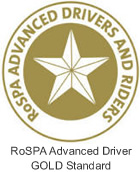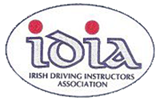Driving Test Tips
|
Quality
|
|||||||
Tips for passing your test - at the first attempt:
On Test Day:Warm up Arrange to have an hour driving lesson around the test centre area on the day of your test. This will help you warm up and get into the right frame of mind. You will also be aware of any new road-works, obstructions etc. so you wont be surprised by them. Forewarned is forearmed. Nerves It’s natural to feel nervous. Take slow, deep breathes for a few minutes. Once the test starts you will settle into driving and your attention will be on the road and your nervousness should disappear.
Think Confidently Think 'can do', 'will do'. In your mind, talk yourself through the test. Identify hazards coming up and how you are going to deal with them. This will really focus your mind on how you should be driving.
Don’t be afraid to ask If you don’t understand what the examiner has asked you to do, don’t be afraid to ask him/her to repeat the instruction.
Think Positively Before you start a manoeuvre, repeat to yourself silently, “this is a piece of cake”. Think positively at all times. You can do it!
Making a mistake If you feel you are messing up a manoeuvre e.g. the reverse manoeuvre, just pull forward and do it again correctly. As long as you haven’t done anything wrong, such as touching the kerb or failing to make effective observations you can still pass.
Stalling If you stall, deal with it calmly and move on. As long as you don’t stall in a dangerous situation, such as on a roundabout, and as long as you handle it properly, it need not count as a major fault and you can still pass the test.
Have I already failed? If you feel you have made a mistake, don’t instantly assume you have failed, it may only have been a minor fault. Put it behind you and focus on what you are doing right now.
Keep your eyes on the road Resist the temptation to look at the examiner and what he/she is doing. You will not be able to deduce anything. Keep your attention on your driving and what is happening ahead and about you.
The 10 most common reasons for failing the Driving Test:
|
|
|||||||



